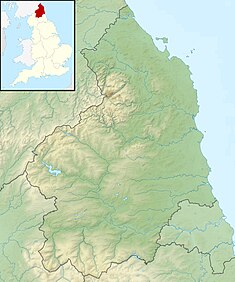Blyth Power Station
| Blyth power stations | |
|---|---|

Blyth A (right) and B (left) power stations, viewed from the south bank of the River Blyth in June 2000
|
|
| Official name | Blyth A & B power station |
| Country | England |
| Location | Blyth |
| Coordinates | 55°8′30″N 1°31′43″W / 55.14167°N 1.52861°WCoordinates: 55°8′30″N 1°31′43″W / 55.14167°N 1.52861°W |
| Status | Demolished and awaiting redevelopment |
| Construction began | 1955 (A station) 1961 (B station) |
| Commission date | 1958-60 (A station) 1962-66 (B station) |
| Decommission date | 1991-2001 |
| Owner(s) |
Central Electricity Generating Board (1958-1990) National Power (1990-2000) Innogy plc (2000-2001) |
| Thermal power station | |
| Primary fuel | Bituminous coal |
| Power generation | |
| Units operational |
A station: 4× 120 MW B station: 2× 275 MW 2× 350 MW |
| Make and model |
Metropolitan-Vickers English Electric |
| Nameplate capacity | 1960: 480 MW 1966: 1,730 MW 1991: 1,180 MW |
Blyth Power Station (also known as Cambois Power Station) refers to a pair of now demolished coal-fired power stations, which were located on the Northumberland coast in North East England. The two stations were built alongside each other on a site near Cambois in Northumberland, on the northern bank of the River Blyth, between its tidal estuary and the North Sea. The stations took their name from the town of Blyth on the opposite bank of the estuary. Blyth A Power Station was built and opened first but had a smaller generating capacity than its sister station, Blyth B Power Station, which was built to its west four years later. The power stations' four large chimneys were a landmark of the Northumberland skyline for over 40 years; the A Station's two chimneys each stood at 140 metres (460 ft); the B Station's two chimneys were taller, at 170 metres (560 ft) each.
Construction of the B Station began shortly after the A station was completed. The stations were built during a period in which there were great advances in power station technology, and in the scale of production, which led to them having a variety of intermediate generator set sizes along with a mix of design styles. Blyth A had a generating capacity of 480 megawatts (MW) and the B Station 1,250 MW. Their combined capacity of 1,730 MW briefly made Blyth Power Station the largest electricity generation site in England, until Ferrybridge C Power Station came into full operation in 1966. The stations were capable of generating enough electricity to power 300,000 homes.
The A Station first generated electricity in 1958, a year after the creation of the Central Electricity Generating Board, and the stations operated until 2001. They were operated by the successors of the CEGB, including National Power, following the privatisation of the UK's power industry. After their closure in 2001, the stations were demolished over the course of two years, ending with the demolition of the stations' chimneys on 7 December 2003. As of 2009, the site is still covered in debris from the demolition. RWE Npower have proposed the construction of a clean coal-fired power station on the site. However, as of November 2009, these plans have been postponed.
...
Wikipedia

